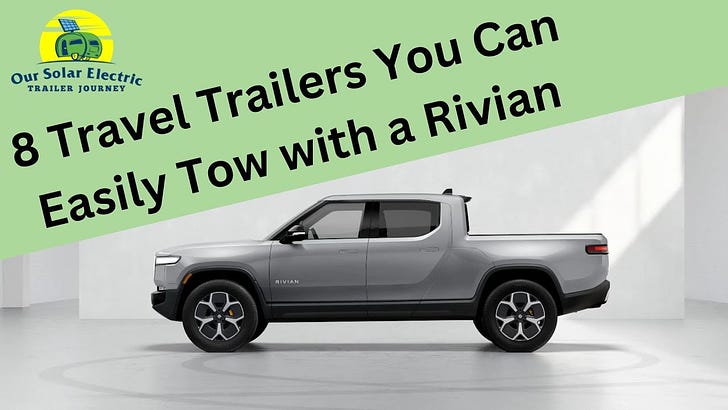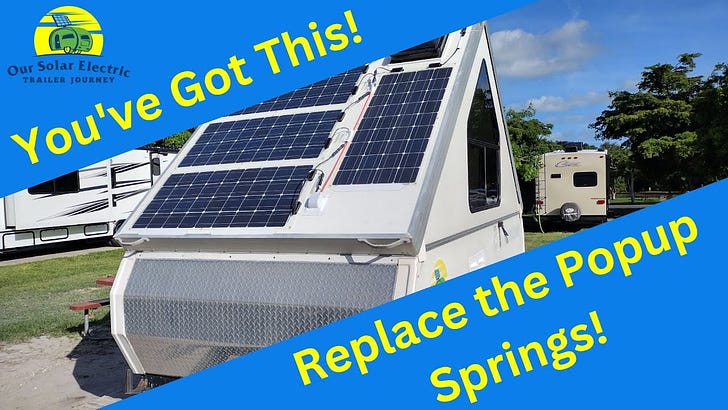When you purchase an item after clicking a link from this post, we may earn an affiliate commission.
You definitely want to avoid the recent problem we had with our Chevy Bolt EV.
After returning from a business trip to Puerto Rico, Devin hopped off the airport shuttle bus on a hot, humid night, reflecting on the story our hair stylist shared of her sister’s EV dying in the airport parking lot because she left the dome light on.
Devin was relieved when the car started right up as usual. Leaving the airport, Devin spotted a Circle K. Craving a soda for the 40-minute drive home, he stopped. When he exited the vehicle, it shut down and locked up in an unusual way.
Before panicking, he went inside for a soda. Returning, he discovered the car was completely dead. The main battery had been more than 75 percent full. The problem was the 12-volt battery that the car uses to run everything except the motors. That little battery is required even to “start” the car.
Devin called Gail for help. She requested an Uber, dressed and grabbed a portable battery designed to help start a car with a dead battery. Some dear friends gave us the device that we use all the time. It has an air compressor for filling tires and cables to start a car, like this one.
While he waited, Devin requested help from AAA. None ever came.
Gail arrived within an hour. Within a minute, we began charging the 12-volt battery with the one Gail brought. We charged for five minutes and then tried to start the car. We repeated this a few times. No luck.
Then, we tried charging for ten minutes. Repeatedly. No luck.
Finally, we charged for 30 minutes. The car started!
Here’s the weird thing. Apparently, the juice won’t flow from the big battery to the little one until the car is in motion (or perhaps only in gear). We couldn’t put the car in gear with the external battery attached and the hood up. The car’s safety systems won’t allow it.
So, we disconnected the external battery, and the car died immediately. We repeated the process with no better luck.
At this point, we’ve noted that so near the airport, we are almost surrounded by hotels. It was 1:00 AM, so we begged Circle K not to tow the car overnight and proceeded to find a hotel. The nearest one refused us, saying they don’t rent rooms to locals.
Better luck at the second hotel, we crashed into bed.
With a full day planned for the next day, we got up early to get to work solving the problem. As auto parts stores opened, we called to find a battery. At the third one, we got a yes.
Devin hopped in an Uber to pick up the battery. Then he jumped in another to get back to the Circle K to install it. He did so using only a crescent wrench that happened to be in the car. YouTube was a big help.
Oddly, the battery was a bit larger than the one it replaced, so he couldn’t reattach the anchoring metal strap.
The auto parts store had promised a small rebate for returning the dead battery, so we headed over to drop it off. While there, we commented on the poor fit. The fellow who sold us the battery assured us it was the correct battery for a Chevy Volt.
We pointed out that we drive a Chevy Bolt. He had no batteries for the Bolt in stock but promised to get one by that afternoon. After our full day, we circled back to get the correct battery. We were grateful that they treated us well and gave us the Bolt battery at the Volt battery price (a difference of $6) and swapped the battery out for us.
Amazon will help you find the right battery for your car. Here’s the one it suggests for the Bolt. The one we bought from the local parts store was much more expensive but had a five-year warranty rather than a three-year one.
In total, we spent more than $200 in costs related to the problem on top of the cost of the battery. We also spent close to 16 person-hours dealing with it. It was a pain.
It could have been an absolute disaster. If the battery had died in a more remote place, in bad weather or a dangerous neighborhood, we could have been in real trouble. You don’t want to have this problem.
The key to avoiding this problem is to replace your battery before it dies. There are two ways to estimate when that will be: an easy way and a harder way.
The more complicated way isn’t challenging. After a drive of at least 20 minutes that should leave the battery fully charged, use a voltmeter to test the voltage. Wait an hour and try it again. If the voltage declines, the battery is struggling to hold a charge and may need to be replaced.
The easier way is just to Google the estimated battery life in your car. The Bolt’s OEM battery life is about four years. Ours lasted 5.7 years. If your vehicle hasn’t had a battery replaced already, check inside the driver’s door frame to see when the car was built. If your battery is at or past its expected life, replace it. If its expected death is in the future, put it in your calendar and when that date arrives, replace the battery without hesitation.
Note: swapping out the battery isn’t tough with the right tools, a good socket wrench set, including a long extension.
You may be replacing a battery that could last another year or more, but the pain you avoid is well worth that cost!














